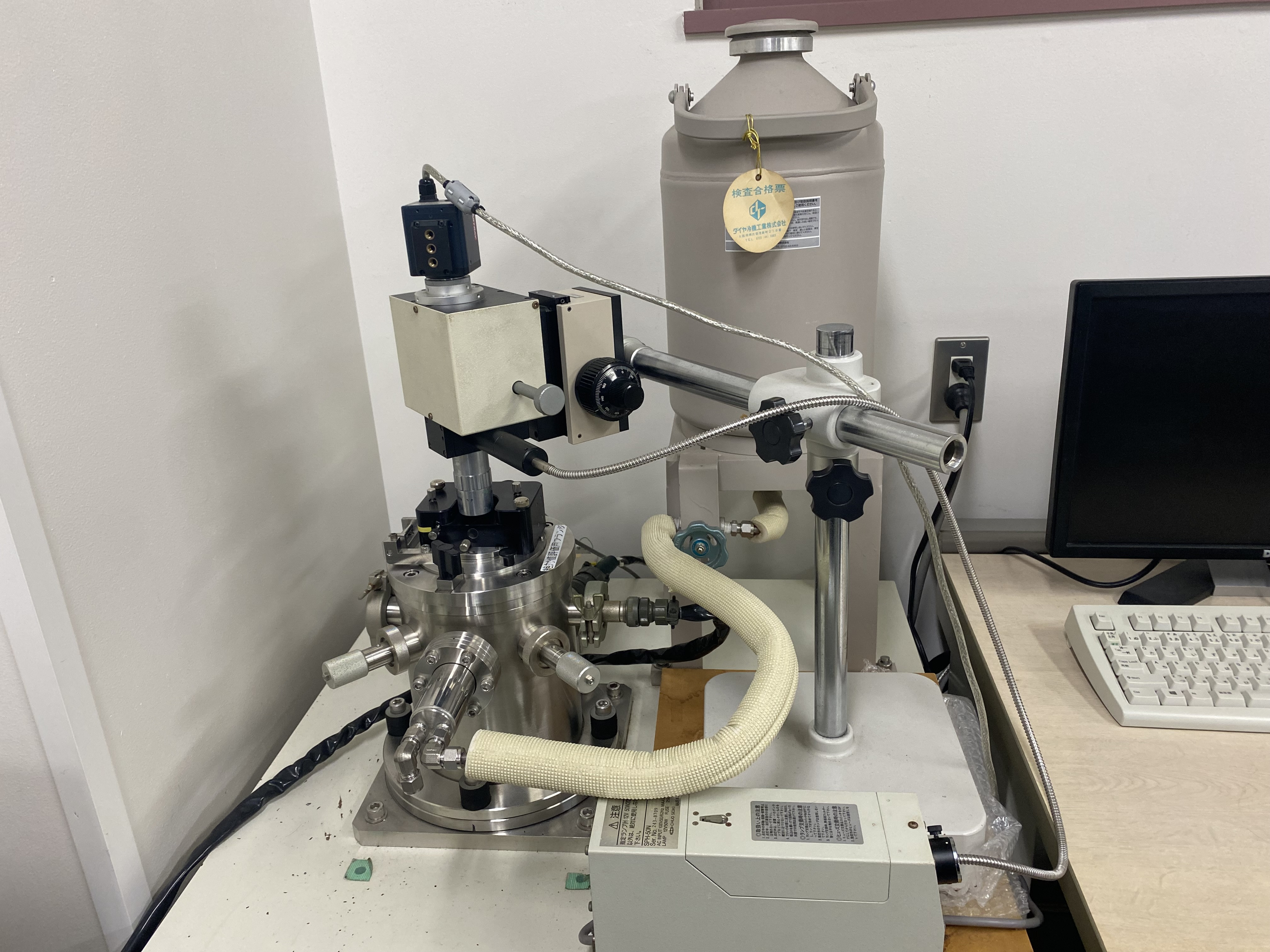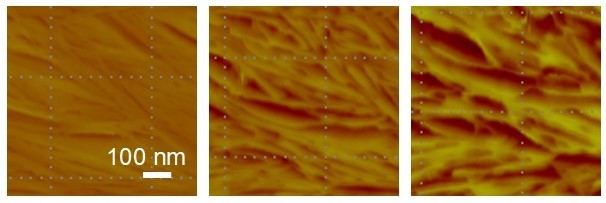高分子は、英語でmacromoleculeとも呼ばれる巨大な分子ですが、そのサイズはせいぜい数十ナノメートル程度しかありません。とても小さな存在ですが、これがアボガドロ数のオーダーで集まり凝集体を形成すると、肉眼でもわかるサイズとなり素材として使えるようになります。日用品から航空機材まで、さまざまな用途で活躍している高分子材料ですが、近年は、性能の一つとして、河川や海洋環境中で分解する性質を備えることが求められています。そのためには、まず、分解する過程の詳細を知る必要があります。我々のグループでは、原子間力顕微鏡(AFM)を駆使し、ナノの空間スケールで起こる高分子の分解反応を視覚的に捉えることで、そのメカニズムを解明することに取り組んでいます。ラメラ結晶の配向に応じた分解機構などが明らかになってきており、”見る”ことで、より優れた高分子材料の創製に繋がる研究を進めています。
学術研究院教授 松野 寿生(大学院有機材料システム研究科・工学部担当)
Polymers, also called macromolecules, are huge molecules, but their size is only a few tens of nanometers at most. Although they are very small, when they come together on the order of Avogadro's number and form aggregates, they become large enough to be seen with the naked eye and can be used as materials. Polymer materials are used in a variety of applications, from daily necessities to aircraft materials, but in recent years, as part of their performance, they are required to have the ability to degrade in river and marine environments. To do this, we first need to know the details of the degradation process of polymers. Our group uses atomic force microscopy (AFM) to visually capture polymer degradation reactions that occur on a nanoscale spatial scale and is working to elucidate their mechanisms. The degradation mechanism depending on the orientation of lamellar crystals is becoming clearer, and we are proceeding with research that will lead to the creation of better polymer materials by seeing them.
Professor (Department of Organic Materials Science, Department of Polymeric and Organic Materials Engineering)
MATSUNO Hisao


寄附・研究のお申し込みはこちら
いいね
0
会員ログイン